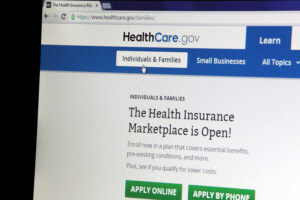If you are selling (or servicing) Medicare Advantage Prescription Drug Plans (MAPDs) or stand-alone PDPs, be very careful to examine the 2015 plans.
Members of NAMSA (National Association of Medicare Supplement Advisors, Inc.) have been forwarding comments on what to look out for in the 2015 plans. Some of the comments develop serious recommendations to those of us in the business.
As a producer, you may be entirely familiar with your new plans, but it is quite possible that your client does not know about changes which may be found in the new plans, and may be relying on the benefits found in the old plan, which may have been changed from the 2014 plan. Therefore, the producer needs to be on the alert for their clients. Here are the major possible problems:
1. Some expensive drugs quietly removed from new formularies. Some of the new formularies may have eliminated a drug that the old plan covered. Knowing the formularies is the most important part of helping the client. Producers are finding that some expensive drugs have simply been removed from the new formularies—rather quietly at that—and the client may simply not know. But you need to know, to forewarn them.
2. Changes in drug tier levels. Some of the new formularies may have moved a particular drug from a Tier 1 or Tier 2 to a higher Tier level.
3. Generic to brand name drugs. Some plans even move the Tier 1 and Tier 2 drugs from a generic to a brand-name drug once the client is in the famous donut hole.
4. Withdrawn plans. Some of the plans may have completely withdrawn from certain counties—thereby leaving the client with no choice but to find another plan.
5. Big savings by searching. Some members report that their office has saved clients as much as $10,000 to $30,000 for the new year by searching out the best Part D deal for the client. It pays to review the plans and recommend which new plan is best for the client.
6. Beware of skyrocketing drug prices. It is entirely possible for a client with an expensive drug need to blow right through the deductible, the co-pay/co-insurance, the donut hole and into catastrophic coverage with the first month’s prescription. Drug prices, even for some old generics, have skyrocketed during the past year—some as much as 1,000%—and new drugs are coming into the market with as high a price as $10,000 per month. In fact, the new drug, Sovaldi, a treatment for Hepatitis C, comes with a price tag of $1,000 per pill and needs a regimen of 89 days of the pill—closer to $30,000 per month—and needs to be taken with another pill that brings the sticker-shock price to $120,000 !!!
7. Increased deductibles, higher co-pays. Some plans have added or increased deductibles, and higher co-pays/co-insurance —particularly in the Non-Formulary meds.
This information comes to you from “boots-on-the ground,” so to speak. NAMSA member producers who actually work with their clients—old and new—reported the above precautions that the alert agent needs to know.
Unfortunately, until some changes are made in Washington regarding Part D, we will go through this each year—but this year the impact has seemed to be more serious than just a few years ago.
If you’re in the business and fail to check out MAPD and PDP plans, you may be in a position to receive a call from a client, within a few months from now, complaining that you didn’t alert them as to all the reasons that can affect their coverage. There’s still time to act and protect your client! Take heed.
• How is your experience aligning with these observations? Please visit this new thread to share your view.








